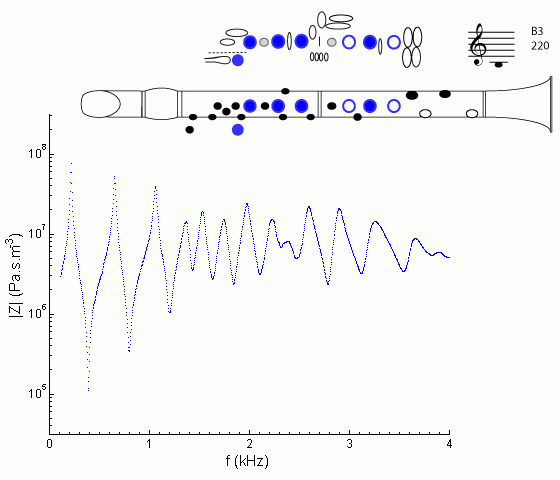| Acoustics of the clarinet |
Bb clarinet |
B3 |

|
Fingering Acoustic schematic Non-specialist introduction
to acoustic impedance Notes are the written pitch. |
This is a cross fingering, which is why its impedance curve is less regular than that for A#3 and C4.
For general comments about the chalumeau register, see E3.

Sound spectrum
of a Bb clarinet
played using fingering for B3.
For more explanation, see
Introduction to clarinet acoustics
|
Contact:
Joe Wolfe
/ J.Wolfe@unsw.edu.au |